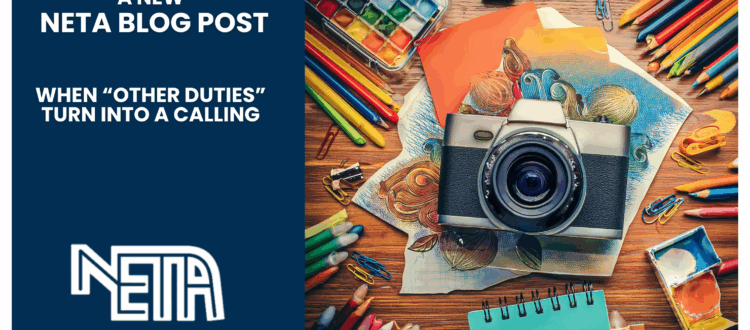When “Other Duties” Turn Into a Calling
Written by: Terry Julian
In education, we’re all familiar with the phrase “Other duties as assigned.” It’s the catch-all for whatever doesn’t neatly fit into a job description—but still needs doing. For some of us, though, there’s a twist. Sometimes those duties aren’t assigned—they’re taken on because they matter.
That’s how I found myself managing my district’s website and social media presence. At first, it didn’t sound too daunting—just one Facebook page and a handful of school sites. But the challenge wasn’t technical; it was cultural. Getting people to share, to engage, to care about communication the way I did? That took work. And commitment.
So I did what educators do best when faced with unfamiliar territory—I learned. I showed up to workshops, conferences, and breakout sessions. I became a sponge for everything related to communication and branding in education.
One of my biggest influences was Joe Sanfelippo. I didn’t just attend his presentations at NETA—I devoured them. I bought his book Hacking Leadership and immersed myself in his ideas about school storytelling and culture-building. His philosophy spoke to me: every school has a story worth sharing, and telling that story well strengthens the whole community.
Telling Your District’s Story Isn’t Easy
Once I committed to improving how we communicate, I learned quickly that “just posting” isn’t enough. Here’s what it really takes:
- Helping others see why storytelling matters.
- Ensuring every piece of communication is polished, professional, and represents the district with pride.
- Balancing transparency, engagement, and appropriateness—all while managing competing priorities.
I kept asking: What makes a great school social media post? What does “professional but engaging” look like in our context? And how can we elevate everyday moments into powerful stories?
Why Accessibility Matters More Than Ever
As my communication efforts evolved, one theme kept coming up: accessibility. It’s not just about ticking boxes—it’s about inclusion. It’s about ensuring every parent, student, and staff member can access the information they need, in the way that works best for them.
When we partnered with a local company to redesign our website, I made it clear: accessibility was non-negotiable. Our vendor incorporated an AI-based solution to support accessible browsing experiences—but I knew that wasn’t the whole answer. Best practices, intentional design, and staff understanding still lag behind. That worries me.
Especially now—since a new rule requires all district communications to meet accessibility standards by April 2027. I’ll admit, when I heard that, I panicked. But panic quickly turned into determination. We have time to learn, to build capacity, and to support others in understanding why this matters.
So Where Do We Learn?
I’ve found incredible learning communities along the way:
- NETA and the groups I am associated with through NETA are staples—always full of inspiration and practical ideas.
- Dr. Jill Johnson and Class Intercom have provided expert support and thoughtful guidance.
- Through Dr. Jill, I connected with NebSPRA, a game-changing resource for school communicators in Nebraska.
- At the Future Ready Nebraska Conference in June, I left inspired and informed by visionary speakers who understand the needs of rural districts like ours.
And one of the quotes from that conference has stuck with me:
“When communications are clear, accessible, and thoughtfully designed, it demonstrates respect.”
It’s a reminder that this work—though sometimes technically outside our training—is fundamentally human.
So What Do You Do With Duties Outside Your Expertise?
You embrace them. You seek knowledge, ask questions, and find mentors. You show up with purpose and humility. You grow. Because in the end, these “other duties” might just be the most impactful ones of all.
✍️ This blog post was shaped with the help of AI—cleaning up my original draft and helping me bring clarity to the heart of the message. I’ve been exploring creative, accessible ways to use AI in my work.
Resources:
Designing for Accessibility Resources List shared with permission from Peg Coover, ESU10
Accessibility in Education.pptx shared with permission from Dorann Avey

